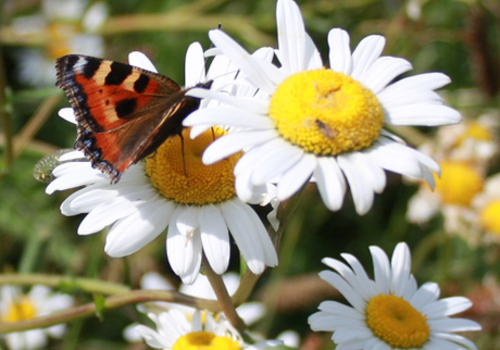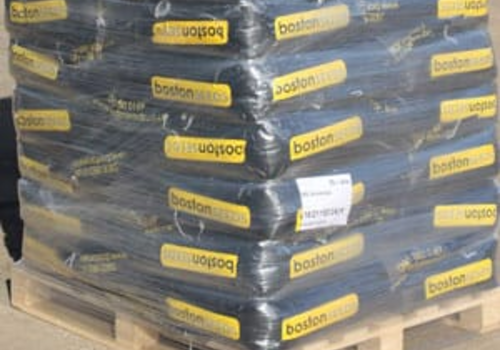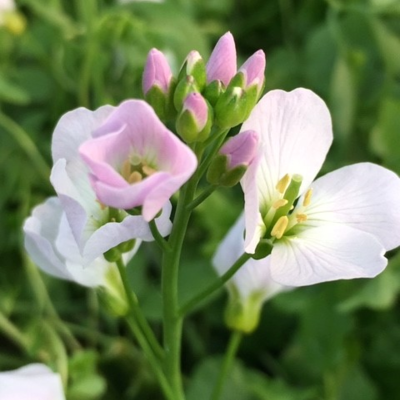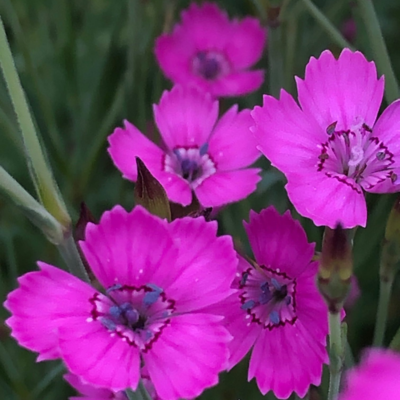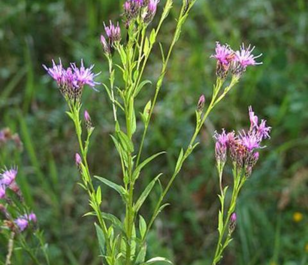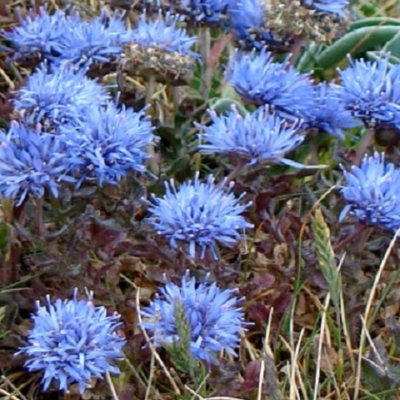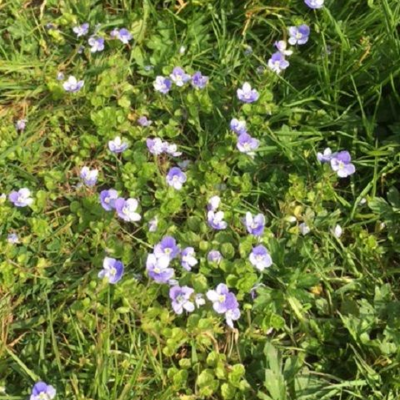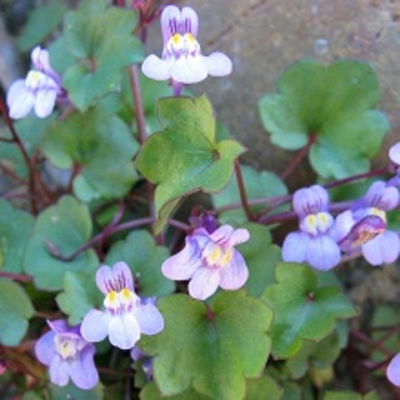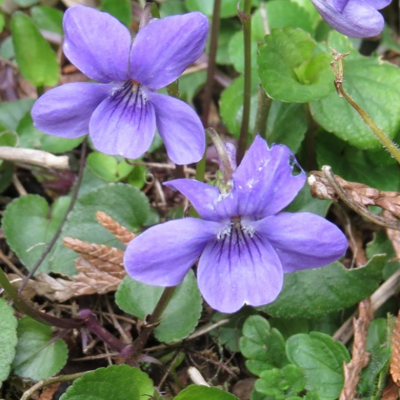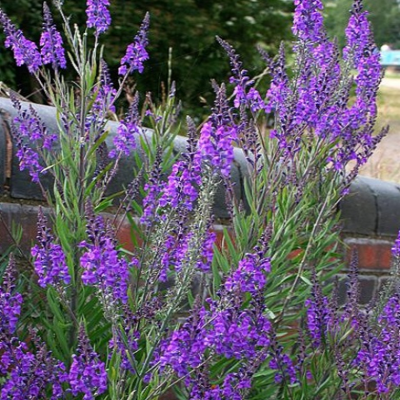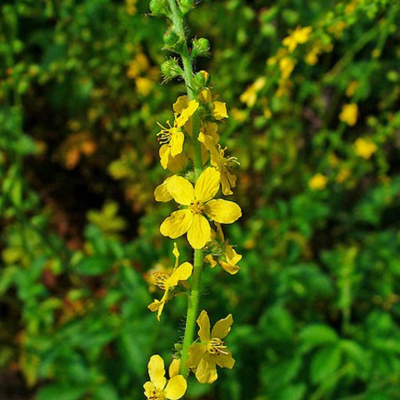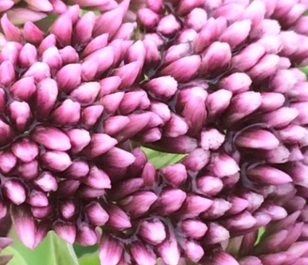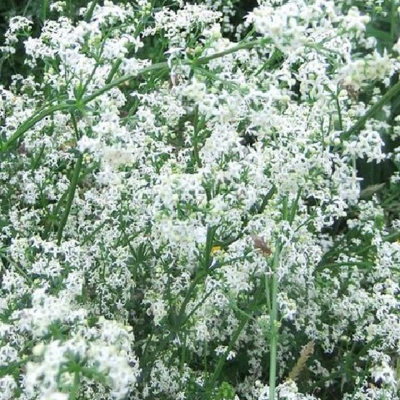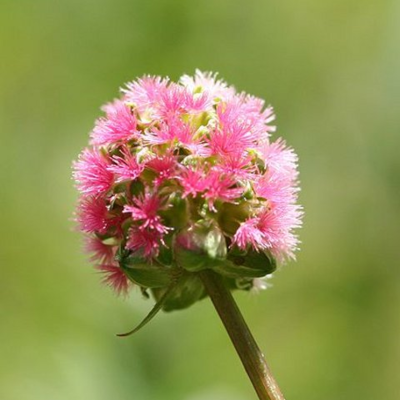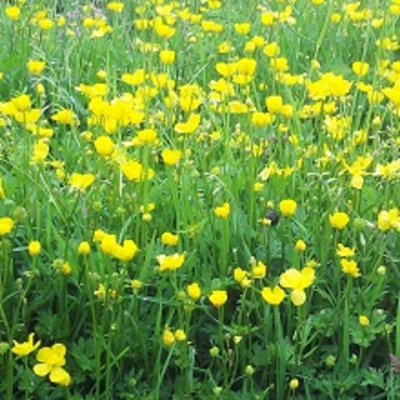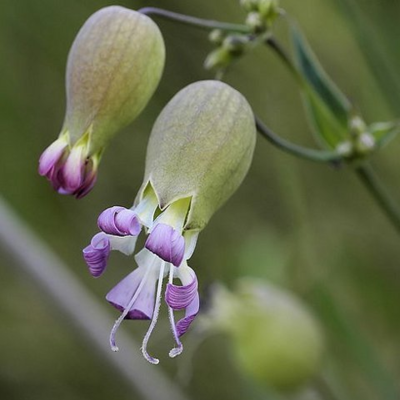Wildflower Plants A to Z
Choose from our entire range of over 100 wildflower plug plants, expertly grown in our very own nursery from high quality, UK native wildflower seed. Our wildflower plugs are ready to be planted straight out into your garden or meadow as soon as they arrive, all year round. Buying individual wildflower plants is one of the best ways to establish your chosen wildflower species, planted individually or as part of a more diverse meadow created from our range of wildflower seeds.
Don't hesitate to get in touch to speak to one of our experts or request a catalogue to view our full range. Ordering regularly or looking for large volumes? Click here to apply for a trade account today - we review all applications within one working day.
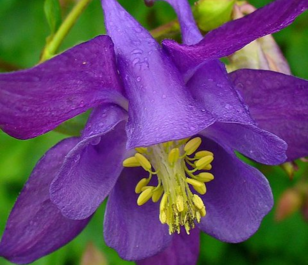

Plants for Pollinators highlights plants selected by the RHS as scientifically proven to tackle the declines in bees, butterflies and other pollinators.
The beautiful, nodding, bell-shaped blooms of the Columbine flower come in a variety of colours, even bi-coloured, though the most common colour in the wild is a vivid blue-violet, contrasted by a shining stamen the colour of honey, which is attractive to bees and butterflies. A cute cottage classic, perfect for pots, beds and borders, as it’s easy to grow and naturalise, though it dislikes being too dry.
- Type: Perennial
- Height: 45–60cm
- Flowers: June-July
- Soil Requirement: Moist but well-drained
- Light Requirement: Full sun or partial shade
- Natural Habitat: Woodlands, roadsides, grasslands
- Also known as: Dove Plant, Lady’s Shoes, Pigeon Foot

Plants for Pollinators highlights plants selected by the RHS as scientifically proven to tackle the declines in bees, butterflies and other pollinators.
Produces rosettes of leaves at the base of the stem leading up to its four pale pink petals. A flower that captures the essence of springtime; it's named because it blooms the same time you'd start to hear a Cuckoo's call.
- Type: Perennial
- Height: 30 – 50cm.
- Flowers: April - June
- Soil Requirement: Moist but well-drained
- Light Requirement: Full sun or partial shade
- Natural Habitat: Damp meadows, pond margins, riverbanks
- Also known as: Lady's-Smock, Cuckoo Bread, Mayflower
The county flower of Roxburghshire is certainly well-named, as its toothy, cerise pink flowers with deep-rose central markings are among our most vivid, and carry all the allure of a fairytale maiden. Recommended for rockeries, this bloom's beauty is easy to get lost in, growing in clusters in a mat of dark silver-green foliage.
- Type: Perennial
- Height: 10-15cm.
- Flowers: May-August
- Soil requirement: Well-drained
- Light requirement: Full sun
- Natural habitat: Hillsides, pastures, dry banks
- Also known as: Lady's Cushion, Meadow Pink, Spink
Named for its serrated, saw-like leaves, these tall-growing and hardy plants are a relative of the daisy, which you’d hardly believe from their violet, thistle-like flowers. They make a sharp statement in a wild meadow!
- Type: Perennial
- Height: 70–120cm.
- Flowers: July-September
- Soil Requirement: Well-drained, chalky
- Light Requirement: Full Sun or partial shade
- Natural Habitat: Meadows, Forest edges
- Also known as: Dyer's Plumeless Saw-Wort
These soft-looking, bright blue blooms pair perfectly with other fluffy-petalled flowers, especially in yellows and pinks, such as hawk-bit and knapweed. An excellent plant for pollinators; bees and butterflies go baa-rmy for them! Recommended for rockeries and rough meadows, or anywhere with sandy soil.
- Type: Biennial
- Height: 20-50cm.
- Flowers: May-September
- Soil Requirement: Well-drained, sandy
- Light Requirement: Full Sun
- Natural Habitat: Grassland, clifftops, coastal areas
- Also known as: Shepherd’s Scabious
A low-growing, creeping beauty that thrives at woodland edges, but also makes for a unique lawn subject- not many other common flowers can compare to these small spikes of azure petals shining in the sun and bringing a little of the blue sky’s beauty down to earth for your garden!
- Type: Perennial
- Height: 10-20cm.
- Flowers: April-July
- Soil Requirement: Moist but well-drained
- Light Requirement: Full sun or partial shade
- Natural Habitat: Roadsides, woodland, grassland
- Also known as: Angels’ Eyes, Blue Stars
-
These low, trailing plants are recommended for rockeries, containers or garden walls, where they’re sure to delight with small, snapdragon-like flowers in mauve and yellow. So-named for its ivy-shaped leaves edged with red, there’s a certain magic to these miniature blooms- in bulk, they resemble a whimsical fairy village! A hardy climbing plant for those who want to add a splash of colour to a covered crevice.
- Type: Perennial
- Height: 5-10cm.
- Flowers: June-October
- Soil Requirement: Well-drained
- Light Requirement: Full sun or partial shade
- Natural Habitat: Cliff faces, coastal areas, grasslands
- Also known as: Climbing Sailor, Mother Of Thousands, Oxford Ivy
Roses are red, and you already knew of the Violet’s namesake shade of purplish-blue. This five-petalled flower’s beauty is well known, and in sun or in shade, it’s quite easily grown. It looks magical decorating the edge of a woodland garden, or beneath a small hedge- but this plant’s so simple, it’s easy to style it; for those who want blue, it just must be the Violet!
- Type: Perennial
- Height: 5-10cm.
- Flowers: April-June
- Soil Requirement: Well-drained
- Light Requirement: Full sun to full shade
- Natural Habitat: Grassland, woodland, hedgerows
- Also known as: Wood Violet
What’s better than spikes of snapdragon-like wildflowers? This particular plant specimen’s vivid violet colouration add a rich and regal splash of colour in beds, borders and gravel gardens, as well as being beneficial for bees and being super easy to naturalise.
- Type: Perennial
- Height: 22-60cm.
- Flowers: June-October
- Soil Requirement: Well-drained, sandy
- Light Requirement: Full sun
- Natural Habitat: Waste ground, rocky soil

Plants for Pollinators highlights plants selected by the RHS as scientifically proven to tackle the declines in bees, butterflies and other pollinators.
Common Agrimony is an attractive, medium height meadow plant, consising of tall spires of star-shaped, sunny yellow flowers. An wildlife-friendly flower, it's attractive to pollinators as well as wild birds.
- Type: Perennial
- Height: 40-80cm
- Flowers: June to September
- Soil requirement: Neutral, well-drained
- Light requirement: Full sun or partial shade
- Natural habitat: Southern UK, grassland, meadows, roadsides
- Also known as: Church Steeples, Sticklewort, Aaron's Rod, Clot-Bur, Fairy's Wand, Money-In-Both-Pockets, Salt-And-Pepper, Sweethearts
A tall-growing upright marsh flower, which grows plentiful parachutes of pink-and-white florets on red stems, and they’re also known for their pleasant perfume when cut. This whimsically-coloured wildflower is also perfect for pollinators!
- Type: Perennial
- Height: 60–120cm.
- Flowers: July-September
- Soil Requirement: Damp
- Light Requirement: Full sun or partial shade
- Natural Habitat: Marshlands, river banks
- Also known as: Hemlock Parsley, Holy Rope, Raspberries-And-Cream, Water Agrimony
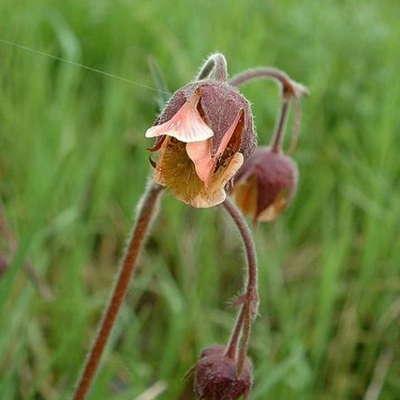

Plants for Pollinators highlights plants selected by the RHS as scientifically proven to tackle the declines in bees, butterflies and other pollinators.
Though it prefers cool spots in the garden, the Water Avens are warmly-hued wildflowers, with gently nodding, burgundy stems and sepals- gorgeous enough on their own, but blooming into cups of peach-coloured petals that make the perfect addition to a pond-side palette!
- Type: Perennial
- Height: 30–45cm.
- Flowers: April-June
- Soil Requirement: Damp
- Light Requirement: Full sun to shade
- Natural Habitat: Coasts, woodlands, damp meadows
- Also known as: Chocolate Root, Indian Chocolate, Purple Avens
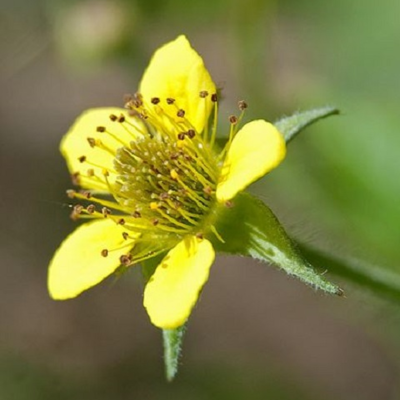

Plants for Pollinators highlights plants selected by the RHS as scientifically proven to tackle the declines in bees, butterflies and other pollinators.
Once named a 'blessed herb' for its uses in herbalism, this hardy, leafy plant can still bless your garden with small, star-shaped, buttery yellow blooms which add some extra brightness to a shady spot- as well as sweetness, as they're nectar-rich and ideal for pollinators.
- Type: Perennial
- Height: 30-60cm.
- Flowers: May-August
- Soil Requirement: Well-drained
- Light Requirement: Partial Shade
- Natural Habitat: Woods, hedgerows, roadsides
- Also known as: Herb Bennett, Colewort, St. Benedict's Herb, Blessed Herb
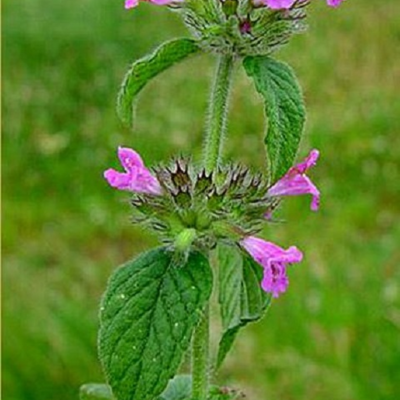

Plants for Pollinators highlights plants selected by the RHS as scientifically proven to tackle the declines in bees, butterflies and other pollinators.
Best known for their distinctly-shaped and aromatic leaves, the basil plant has a lot to provide inside the garden and out, as it produces whorls of royal purple and pink petals which are perfect for pollinators.
- Type: Perennial
- Height: 30-60cm.
- Flowers: July-September
- Soil Requirement: Well-drained, calcareous
- Light Requirement: Full Sunlight
- Natural Habitat: Dry meadows, forests, hedgerows
- Also known as: Cushion Calamint

Plants for Pollinators highlights plants selected by the RHS as scientifically proven to tackle the declines in bees, butterflies and other pollinators.
A rambling, hairless hedge plant, which produces clusters of tiny, star-shaped flowers in fresh white. Noted for its sweet scent, this vigorous wildflower can grow quite tall when clambering alongside hedges and shrubs.
- Type: Perennial
- Height: 30–75cm.
- Flowers: July-August
- Soil Requirement: Well-drained, calcarerous
- Light Requirement: Partial shade
- Natural Habitat: Woodlands, grasslands, hedgebanks
- Also known as: False Baby’s Breath, Whip Tongue, Wild Madder
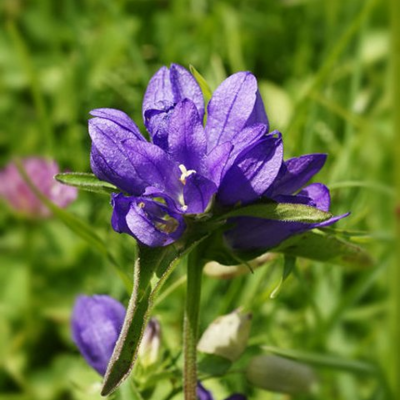

Plants for Pollinators highlights plants selected by the RHS as scientifically proven to tackle the declines in bees, butterflies and other pollinators.
As its name suggests, the Clustered Bellflower sprouts dense bursts of vivid violet-blue flowers. Each flower is its own brilliant bouquet, on top of being hardy and attractive to bees and butterflies!
- Type: Perennial
- Height: 30–75cm.
- Flowers: June-September
- Soil Requirement: Well-drained, chalky
- Light Requirement: Partial shade
- Natural Habitat: Grasslands, coastal cliffs
- Also known as: Dane’s Blood
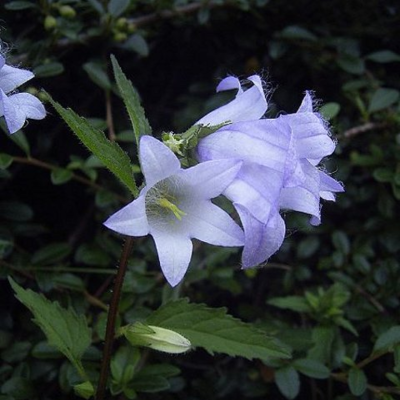

Plants for Pollinators highlights plants selected by the RHS as scientifically proven to tackle the declines in bees, butterflies and other pollinators.
Though named for its nettle-like leaves, one mustn’t overlook the beauty of this bloom’s bells of pale, bluish-purple petals. Best planted in a dry, shady spot.
- Type: Perennial
- Height: 50–100cm.
- Flowers: June-September
- Soil Requirement: Well-drained
- Light Requirement: Full sun or partial shade
- Natural Habitat: Woodlands, hedgebanks
- Also known as: Blue Devils, Gloves Of Mary, Throatwort
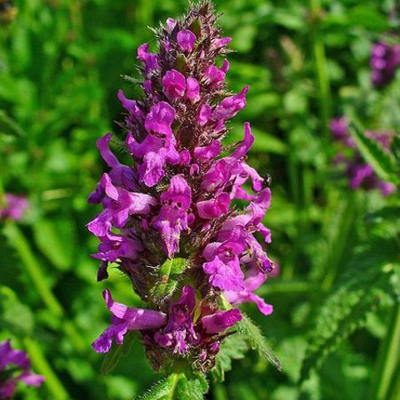

Plants for Pollinators highlights plants selected by the RHS as scientifically proven to tackle the declines in bees, butterflies and other pollinators.
Betony flowers bloom in spikes of rich wine red and purple, alongside distinct and attractive foliage. Its flowers are also known to attract bees and butterflies and they used to be planted in churchyards for spiritual protection. They grow well in any light, with an affinity for damp soil.
- Type: Perennial
- Height: 30-60cm.
- Flowers: June-August
- Soil Requirement: Moist but well-drained
- Light Requirement: Full sun or partial shade
- Natural Habitat: Grassy meadows, river banks
- Also known as: Bishops’s Wort, Wood Betony, Common Hedgenettle
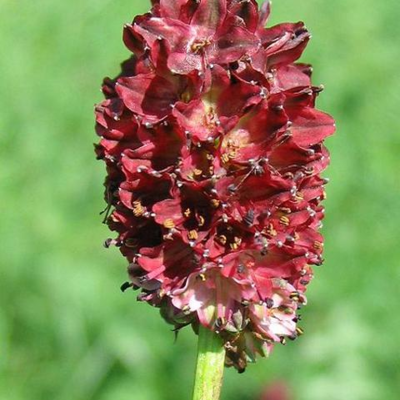

Plants for Pollinators highlights plants selected by the RHS as scientifically proven to tackle the declines in bees, butterflies and other pollinators.
The Great Burnet is a lively-looking plant, sporting crimson flower clusters atop tall, branching stems with distinct jagged leaves. They’re highly attractive to pollinators, and for a good reason; this wild-growing relative of the rose is not to be overlooked!
- Type: Perennial
- Height: 45-90cm.
- Flowers: June-September
- Soil Requirement: Moist but well-drained
- Light Requirement: Full sun or partial shade
- Natural Habitat: Floodplains, meadows, riverbanks
- Also known as: Burnet Bloodwort

Plants for Pollinators highlights plants selected by the RHS as scientifically proven to tackle the declines in bees, butterflies and other pollinators.
A smaller species of burnet with miniature, round red flowers growing in clusters, as well as edible toothed leaves which are pleasantly scented when crushed.
- Type: Perennial
- Height: 20-50cm.
- Flowers: May-August
- Soil Requirement: Well-drained
- Light Requirement: Full sun
- Natural Habitat: Chalky grasslands
- Also known as: Garden Burnet, Pimpernelle, Toper’s Plant
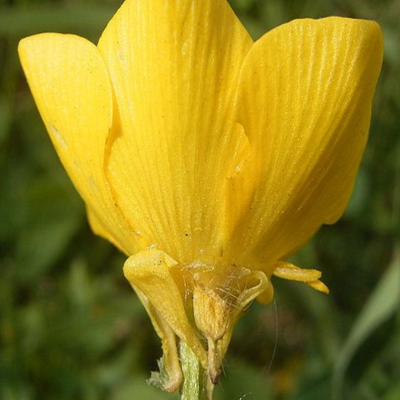

Plants for Pollinators highlights plants selected by the RHS as scientifically proven to tackle the declines in bees, butterflies and other pollinators.
So-named for their swollen underground stem, the bulbous buttercup is a more widespread variant of the iconic glossy-yellow springtime wildflower. Thrives in acidic soil, with good sunlight to best bring out its golden glow.
- Type: Perennial
- Height: 30–45cm.
- Flowers: March-June
- Soil Requirement: Well-drained
- Light Requirement: Full sun
- Natural Habitat: Meadows, grasslands, road verges
- Also known as: Frogs-Foot, Goldcup
The Creeping Buttercup has classic charm, with glossy yellow, five-petalled flowers on short stems covered with fine hairs. A natural attractant for pollinators, and it adds a wonderful golden glow to lawns, paths, and spots with loamy soil.
- Type: Perennial
- Height: 20-50cm.
- Flowers: May-September
- Soil Requirement: Moist
- Light Requirement: Full sun or partial shade
- Natural Habitat: Damp grasslands, gardens, pastures
- Also known as: Lantern Leaves, Ram's Claws, Sit-Fast
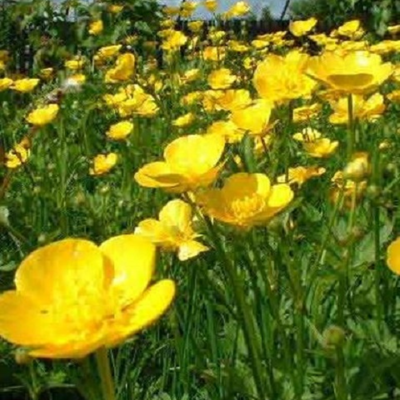

Plants for Pollinators highlights plants selected by the RHS as scientifically proven to tackle the declines in bees, butterflies and other pollinators.
The Meadow Buttercup is the tallest-growing of the buttercups, with a slight preference for damper ground. These bright and buttery, bowl-shaped blooms make an amazing addition to meadows!
- Type: Perennial
- Height: 30–90cm.
- Flowers: May-September
- Soil Requirement: Moist but well-drained
- Light Requirement: Full sun or partial shade
- Natural Habitat: Meadows, grasslands, road verges
- Also known as: Butter Daisy, Goldweed, Meadow Cup

Plants for Pollinators highlights plants selected by the RHS as scientifically proven to tackle the declines in bees, butterflies and other pollinators.
An unusual yet distinct variant of campion, which has grey-tinted foliage and grows drooping, fresh white bladders veined with purple, and five-petalled flowers. A plant with a subtle, withdrawn beauty that also attracts bees and butterflies.
- Type: Perennial
- Height: 20–60cm.
- Flowers: June-August
- Soil Requirement: Well-drained
- Light Requirement: Full sun
- Natural Habitat: Meadows, open forests, hedgerows
- Also known as: Cowbell, Maiden’s Tears
Choosing different wildflower plants by species gives you complete control over when you plant them, where you plant them and what the end result will be. And buying wildflower plug plants instead of seeds, means that you don't have to wait for them to germinate - perfect if speed is of the essence!
The full range of over 100 British wildflower plants species from Boston Seeds is available to buy online in trays of 25, 150 and 500 plug plants and all are available with nationwide delivery.
Want to learn more about the likes and dislikes of your favourite wildflower plants? Our handy wildflower species quide will tell you all you need to know - yours to download and keep for FREE.
Buy With Confidence

